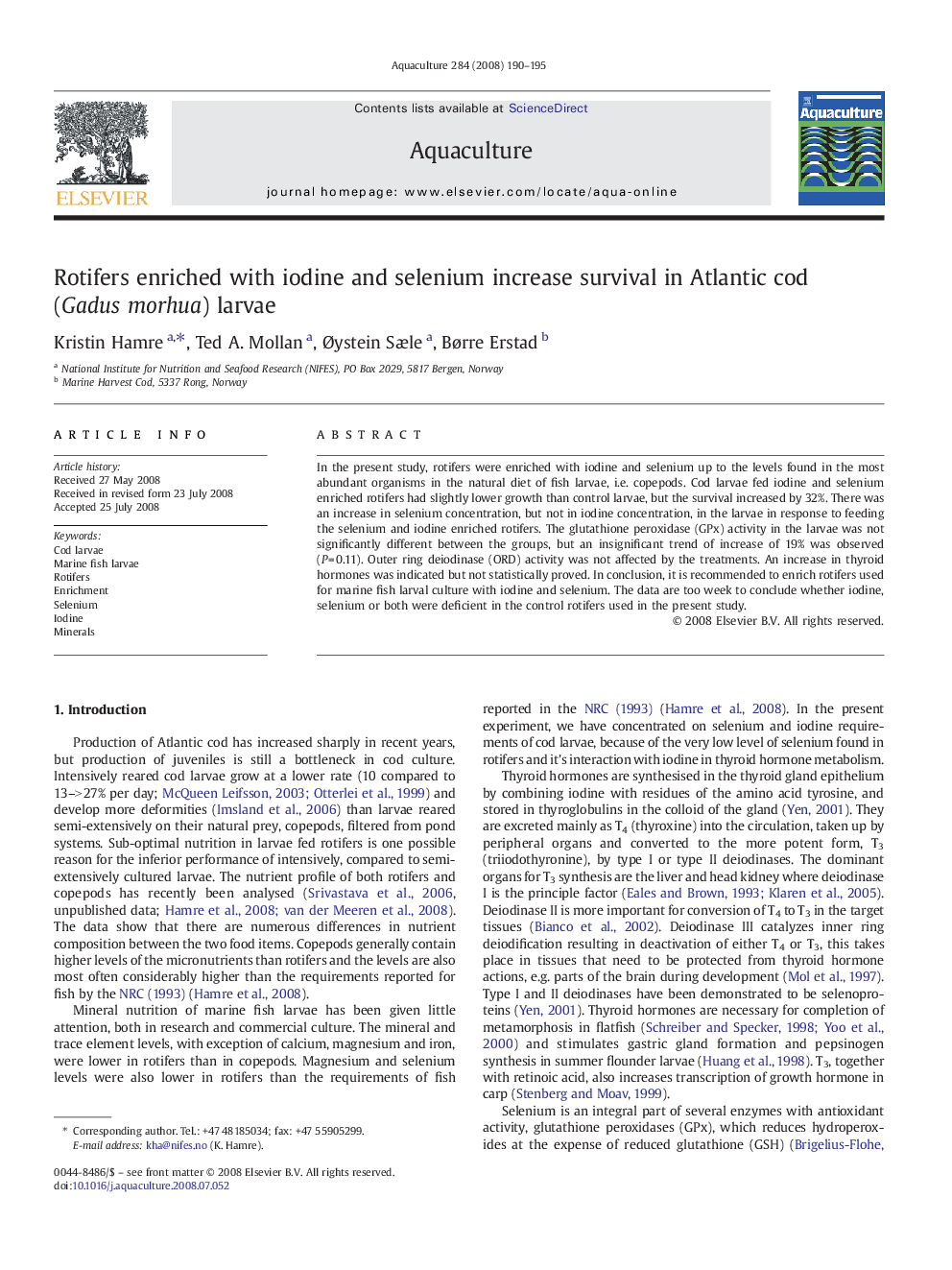| Article ID | Journal | Published Year | Pages | File Type |
|---|---|---|---|---|
| 2424449 | Aquaculture | 2008 | 6 Pages |
In the present study, rotifers were enriched with iodine and selenium up to the levels found in the most abundant organisms in the natural diet of fish larvae, i.e. copepods. Cod larvae fed iodine and selenium enriched rotifers had slightly lower growth than control larvae, but the survival increased by 32%. There was an increase in selenium concentration, but not in iodine concentration, in the larvae in response to feeding the selenium and iodine enriched rotifers. The glutathione peroxidase (GPx) activity in the larvae was not significantly different between the groups, but an insignificant trend of increase of 19% was observed (P = 0.11). Outer ring deiodinase (ORD) activity was not affected by the treatments. An increase in thyroid hormones was indicated but not statistically proved. In conclusion, it is recommended to enrich rotifers used for marine fish larval culture with iodine and selenium. The data are too week to conclude whether iodine, selenium or both were deficient in the control rotifers used in the present study.
